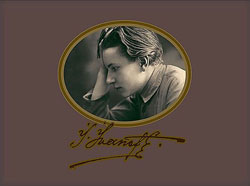
A poster advertises the Čikāgas piecīši concert in Rīga, as well as performances in five other Latvian cities.
A great Latvian word is the adjective sirsnīgs. Roughly translated, it means “from the heart” or “warm hearted” or “sincere.” It is one of the most complimentary things one can say in Latvian. If I were to sum up my thoughts in one word on the sold-out Čikāgas piecīši concert, “Kad Latvijai bij’ 90,” in the Arēna Rīga on Independence Day, sirsnīgs would do nicely.
Though members of the group have made sporadic appearances in Latvia in the past years, the last true full band performance of the group in Latvia was in 1995. For this year’s concert tour, the performers were stalwarts Alberts Legzdiņš (vocals, guitar and group founder), Armands Birkens (vocals, guitar), Uldis Streips (bass guitar, vocals), Alnis Cers (guitar), and the returning Laurie Cinkuss (vocals) and Janīna Ankipāne (vocals, guitar).
This was actually the first time that I had seen the group in concert. Alhough I grew up in the United States, I never managed to see Čikāgas piecīši. So I was very much looking forward to seeing the group when it performed Nov. 18. It has been a very long time since the group was in Rīga, but time doesn’t seem to have had much effect on its members, particularly on Ankipāne and Birkens, who sound just like they did 30 years ago.
As the group has not had a new album since 1994’s Vai debesīs būs Latvija?, the concert—the third of a six-city tour of Latvia—focused mainly on the many hits Čikāgas piecīsi has had throughout the years, particularly from the 1970s and ‘80s.
For the most part, the audience in Arēna Rīga was rather subdued. The loudest applause was saved for Birkens’ performance of “Mūsu mīlestība” and his duet with Cinkuss on “Lai visa pasaule to redz.” Other highlights included Ankipāne’s performance of “Sapnis par Latgali,” the ever-popular “Pazudušais dēls,” the poignant “Kurzemnieki Viskonsīnā,” “Es redzēju bālēliņu” (which Cinkuss was quick to point out was not a folk song, though it has all but become one), and the rarely heard Birkens solo number “Roze.”
Guests included Māris Muktupāvels (of post-folk group Iļģi) on accordion for a few songs; men’s choir Gaudeamus, beer steins in hand, singing along with “Man garšo alus” (which featured notably different lyrics than the original recording); and a number of Latvia’s children’s ensembles performing on several songs.
The comedy skits that are often part of the Piecīši’s performances were minimal this time around, likely due to the fact that the group’s main skit writer, Uldis Ievāns, suffered a stroke a few years ago. However, Legzdiņš did provide a bit of comedy with a copy of the newspaper Diena, cracking wise about the newly opened Dienvidu (Southern) Bridge in Rīga, as well as the results of the latest U.S. presidential election. Another bit of comedy was in the song “Latviešu sievietei.” The original version of the song featured the line, “Nav viegli latviešu sievietei būt” (It is not easy to be a Latvian woman). But, in today’s environment, it was changed to “Nav viegli latviešu vīrietim būt” (It is not easy to be a Latvian man), with a man now expected to be as intelligent as former president Vaira Vīķe-Freiberga, not to mention as attractive as Latvian singer Linda Leen.
Were I to be pressed to say anything critical of the concert, I would point out the subdued audience, who, though very polite, didnt much participate in the concert by singing along. Legzdiņš himself had to plead with the audience (with little effect) to sing along. Perhaps this was due to the early starting time of the concert (4 p.m.), so not enough beer had been ingested yet. It would have been nice to hear more of Ankipāne. Though she certainly did get many chances to sing, her solos such as “Staburadze” or “Nāk rudentiņis” were missed. Also, I would have liked to hear a few more of the group’s 1960s songs. And, sorry gang, I could probably do without hearing “Sekss ir labs” for a while!
Latvia, being the home of so very many talented professional musicians, has many excellent concerts. Because so very many Latvians take their music so very seriously, many concerts wind up being over-professional, and, to some extent, even a bit “cold.” This was certainly not the case with the Piecīši concert, where one could tell that the members of the group were overjoyed to be back and performing on Latvia’s Independence Day in front of such a large crowd. Hopefully we won’t have to wait another decade for another concert!
Details
Kad Latvijai bij’ 90
Čikāgas piecīši
Rīga, Latvia: 2008





